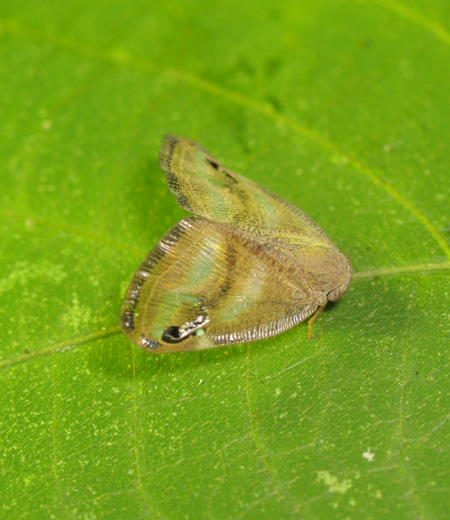Mt. Takao is considered one of the three major habitat of insects along with Minoo (Osaka prefecture) and Kibune (Kyoto prefecture) and it has long been loved by researchers of insects because of number of species and the easy access from the Metropolitan area. There are many insects first found in Mt. Takao and named after "Takao" such as Takao Shachihoko (Hiradonta takaonis Matsumura) and Takao medaka kamikiri (Stenhomalus takaosanus).

Main Region: Honshu, Shikoku, Kyushu, Okinawa, Yaku Island and Tsushima.
Found in sunny woods and open grasslands from flatlands to low elevations, and even in cities where plants grow.
A part of ricaniidae family.
Body color varies by species but mostly yellow-brown to brown with transparent thick belt-like parts.
Have black spots at tips of wings that resemble moths when resting with wings spread out to the sides.
Pierce needle-like mouthparts to stems of plants including citrus trees such as mandarin orange, in fabaceae family such as kudzu, Japanese yam and Deutzia crenata and suck sap.
Nymphs have brown and white irregular patterns with light yellow cotton-like hair at the tip of abdomen.
●Length about 6 to 8 mm
●Adults Flight Season July to about September
Found in sunny woods and open grasslands from flatlands to low elevations, and even in cities where plants grow.
A part of ricaniidae family.
Body color varies by species but mostly yellow-brown to brown with transparent thick belt-like parts.
Have black spots at tips of wings that resemble moths when resting with wings spread out to the sides.
Pierce needle-like mouthparts to stems of plants including citrus trees such as mandarin orange, in fabaceae family such as kudzu, Japanese yam and Deutzia crenata and suck sap.
Nymphs have brown and white irregular patterns with light yellow cotton-like hair at the tip of abdomen.
●Length about 6 to 8 mm
●Adults Flight Season July to about September
